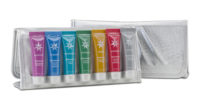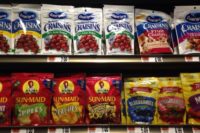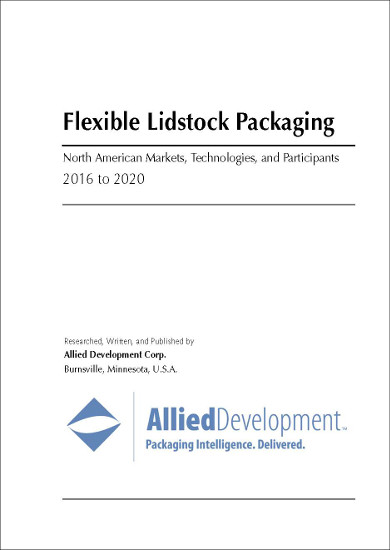Flexible packaging is emerging as a choice for food manufacturers to stand out. Under the umbrella of flexible packaging are package designs such as stand-up pouch bags, which comprise several layers of plastic and are designed to protect food from degrading. Here are seven key reasons why many manufacturers are adopting flexible packaging.
1. Eco-friendly
While plastic film helps give flexible packaging its flexible principles, other materials are used as well. Furthermore, working with a sustainability-conscious printer like Insty-Prints makes flexible packaging an even greener solution. One of the reasons it's considered a sustainable solution is that it does not require much of earth's resources to produce and the materials can be reused and recycled. Now that sustainability is becoming a popular topic, promoting sustainable solutions can help a company's image and reputation. Overall, flexible packaging generates less greenhouse gas emissions throughout its distribution than traditional packaging.
2. Convenient
Some of the features in flexible packaging include spouts, zip locks and resealable seals. One of the important keys for communicating effectively through flexible packaging is giving the consumer something that instantly makes sense. So whatever the design is, it should make life easier in some way for the buyer.
3. Cost-efficient
The cost of manufacturing flexible packaging is lower than more traditional packaging, partly because it requires less materials. Even if the manufacturer needs to make multilayer films to create more secure barriers, the company will still save money. The more film layers, the more secure and tamper-resistant the package is, which helps cut losses on tampering. The strong durable film also protects the packaging from tearing in the supply chain and at the retail store. Another affordable quality of flexible packaging is that it can lead to a higher product-to-package ratio, which lowers manufacturing costs. Adding more layers to packages can actually reduce costs more due to adding organizational efficiency with less need for expensive complex engineering.
4. Lightweight
When a product is lightweight it can reduce shipping costs compared with heavier items. Lightweight objects are easy to transport and take up less space than heavier items of the same size. Regardless of the form the package takes, it is usually much lighter than conventional packaging. Lighter objects are usually less likely to get damaged during shipping if stored appropriately.
5. Safer Distribution
One of the most important reasons why flexible packaging is growing in acceptance is that it preserves food well. Due to airtight packaging that protects food from environmental elements such as sunlight, temperature and moisture, flexible packaging can increase the shelf life of perishable products. flexible containers, furthermore, are less likely to get damaged during the shipping process compared with rigid boxes. The durable quality of flexible packaging also helps protect the exterior and its design.
6. Customizable
The soft and flexible nature of the materials that can easily bend make flexible packaging conducive for customizable solutions. The plastic can be molded into any shape, size or visual presentation you desire. Ultimately the fact that you can create unique designs means flexible packaging will give you a competitive advantage. The three main types of customizable film materials are chloride, polyolefin and polyethylene. These materials are so versatile that the package can stand up or lay down. Graphic designers are empowered by flexible marketing because it gives them more design control than with other materials. It basically gives the designer the ability to position artwork anywhere on the package. Remember that brand awareness depends on recognizable and likable packaging.
7. Innovative
Now that packaging is clearly viewed as part of marketing, one of the goals of packaging designers is to use creativity to produce unique new packaging concepts. Some of the effects of flexible packaging that can enhance positive perceptions include glossiness and clarity. The fact that flexible packaging design is wide open to endless possibilities makes it a valuable and versatile resource for producing innovative new packaging at any time. If a brand is to expand or fill unserved market gaps its parent company has to take chances sometimes while managing risk. Only in recent decades have marketers realized that packaging affects brand recognition and is part of selling the product. Sometimes a unique package that stands out can get attention quickly if it resolves other consumer pain points. Innovation is an important component to competition and business survival, which is driving more attention toward flexible packaging.




